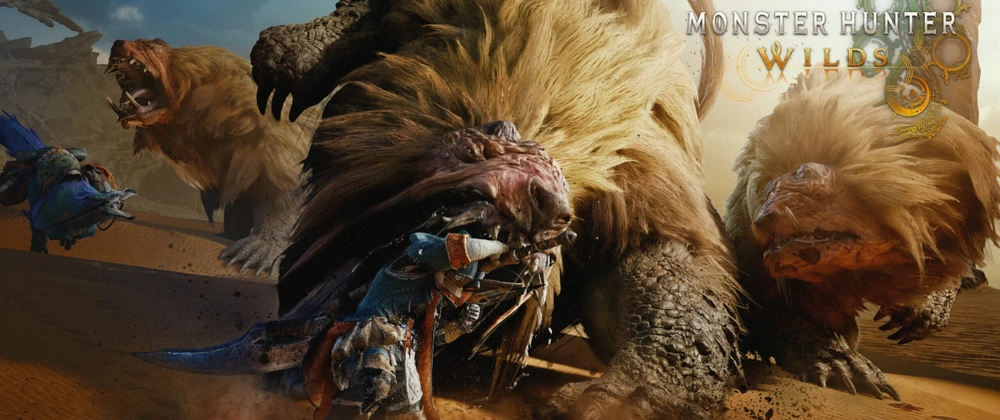Monster Hunter Wilds has taken the gaming world by storm, breaking sales records and setting new benchmarks for the action RPG genre. Released earlier this month, the game has already sold over 8 million copies, solidifying Capcom’s dominance in the market. This success highlights the impact of AAA game developers, game design companies, and the intricate work of computer game development in creating immersive experiences that captivate millions.
The Success of Monster Hunter Wilds
Capcom’s latest installment expands upon its predecessor, Monster Hunter: World, with vast open-world environments, enhanced AI, and dynamic weather systems that directly influence gameplay. These elements have contributed to its overwhelming success, drawing in both veterans and newcomers.
Key Factors Behind Its Success
Open-World Evolution: Unlike previous games, Monster Hunter Wilds introduces a seamless world where players can track and hunt creatures without loading screens. The world feels alive, with creatures interacting organically with the environment and each other.
Advanced AI: Monsters exhibit realistic behaviors, reacting dynamically to their surroundings and adapting to player strategies. Some creatures fight among themselves, while others hunt in packs or flee when injured.
Enhanced Co-op Play: Multiplayer has been improved, with cross-platform capabilities allowing friends to team up regardless of console or PC. Players can drop in and out of hunts seamlessly.
Next-Gen Graphics & Physics: Built on Capcom’s RE Engine, the game boasts stunning visuals, realistic physics, and dynamic destruction elements. Environments change over time, such as shifting dunes in the desert or ice melting in warm temperatures.
Engaging Progression System: The game strikes a perfect balance between challenge and reward, offering deep crafting, armor upgrades, and monster research that encourages continued play.
New Weapons & Monster Interactions: Players can use a variety of weapons with intricate combos, while monsters display a range of attack patterns and behaviors, requiring strategy and skill to defeat.
With these factors in mind, aspiring game developers and computer game development enthusiasts may wonder: how can a similar game be built using Unity3D or Unreal Engine?
How to Develop a Game Like Monster Hunter in Unity3D or Unreal Engine
Creating a game with the scale and depth of Monster Hunter Wilds requires careful planning, robust tools, and an understanding of game mechanics. Here’s a roadmap to developing a monster-hunting RPG using game design companies’ methodologies.
- Choosing the Right Engine
Unity3D is ideal for indie developers and mid-sized studios. It offers flexibility, cross-platform support, and an extensive asset store. Unity’s HDRP (High Definition Render Pipeline) enables stunning visual fidelity for high-end monster designs.
Unreal Engine provides high-fidelity graphics, real-time rendering, and powerful AI tools, making it a go-to for AAA game developers. Features like Nanite (virtualized geometry) and Lumen (global illumination) help create ultra-realistic environments.
- Building a Living World
Use Procedural Generation for vast maps to save development time and create diverse biomes.
Implement dynamic weather systems using particle effects and shaders that impact gameplay.
Create diverse ecosystems where AI-driven creatures interact naturally with the environment and one another.
- Developing Monster AI
Use Behavior Trees to dictate monster movements, attack patterns, and responses to the player.
Implement NavMesh AI for realistic pathfinding and pursuit mechanics.
Develop a state-based AI system, where monsters shift between aggressive, defensive, and fleeing behaviors based on health, surroundings, or player actions.
- Combat System & Player Mechanics
Implement real-time melee and ranged combat mechanics with hit detection, dynamic weapon switching, and combo systems.
Design fluid animations using motion capture and Unreal’s Control Rig or Unity’s Cinemachine.
Add stamina-based mechanics to create a balance between attack and defense, forcing players to strategize.
Include a grappling system to allow players to mount and weaken large creatures.
- Multiplayer and Online Co-op
Integrate dedicated servers or peer-to-peer (P2P) networking for seamless co-op gameplay.
Enable cross-platform compatibility between PC and consoles for a wider player base.
Create raid-style encounters where multiple players team up to hunt powerful monsters.
- Crafting & Progression Systems
Implement a deep loot and crafting system where players collect materials to forge weapons and armor.
Create a hunter ranking system that unlocks new quests, areas, and challenges.
Add an eco-system-based quest structure, where certain events (like a monster migration) trigger rare encounters.
- Monetization & Post-Launch Support
Offer DLC expansions with new monsters, weapons, and story missions.
Implement a cosmetic microtransaction system for non-pay-to-win monetization.
Regular updates with community-driven content help retain the player base.
Introduce seasonal events where players can unlock exclusive content by participating in limited-time challenges.
Challenges in Developing a Monster Hunting Game
Despite the roadmap, creating a monster-hunting game of AAA quality comes with unique challenges:
Animation Complexity: Monsters require detailed skeletal structures and fluid movement.
World Interactions: Large, interconnected open worlds demand high memory optimization.
AI Optimization: Sophisticated monster AI can be processor-intensive, requiring efficient coding and testing.
Network Stability: Online co-op features must handle high traffic while maintaining low latency.
Final Thoughts
Monster Hunter Wilds’ record-breaking sales reaffirm the importance of game design companies, cutting-edge AI, and immersive mechanics in modern AAA game development. By utilizing Unity3D or Unreal Engine, indie developers and computer game development enthusiasts can build similar experiences. With the right tools, a solid development team, and an understanding of player engagement, the next monster-hunting phenomenon could be just around the corner!



Top comments (0)